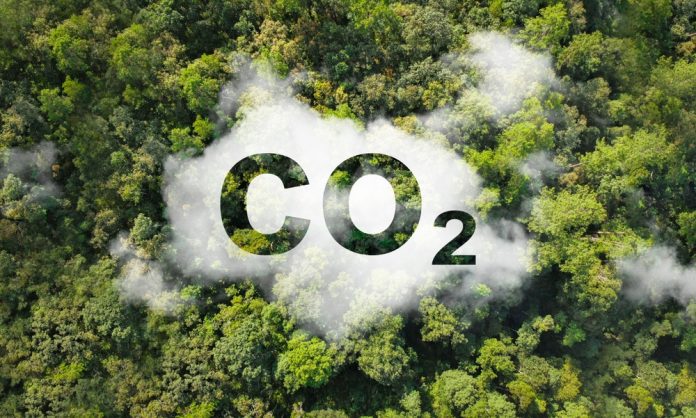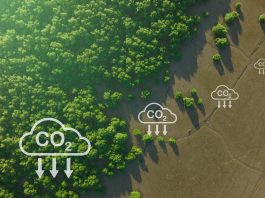Researchers at McGill University have pioneered a catalyst for CO2 conversion that could be a ‘game-changer’ in the fight against climate change.
The McGill catalyst employs tiny bits of copper known at nanoclusters to convert CO2 into methane, a cleaner source of energy.
Whereas traditional methods of generating methane from fossil fuels add more CO2 to the atmosphere, the new electrocatalysis process does not.
The innovation could prove pivotal in reaping the benefits of renewable energy as the planet strives towards a green future.
Mahdi Salehi, PhD, a candidate at the Electrocatalysis Lab at McGill University, explained: “On sunny days, you can use solar power, or when it’s a windy day, you can use that wind to produce renewable electricity, but as soon as you produce that electricity you need to use it.
“But in our case, we can use that renewable but intermittent electricity to store the energy in chemicals like methane.”
The global threat of carbon emissions
Carbon emissions, primarily in the form of CO2, are a significant driver of climate change.
These emissions are largely produced by human activities such as burning fossil fuels (coal, oil, and natural gas), deforestation, and various industrial processes.
When CO2 is released into the atmosphere, it acts as a greenhouse gas, trapping heat that would otherwise escape into space. This process, known as the greenhouse effect, leads to an overall warming of the planet.
The increased concentration of CO2 and other greenhouse gases enhances this natural greenhouse effect, causing global temperatures to rise.
This warming influences weather patterns, leading to more extreme weather events, rising sea levels, and disruptions to ecosystems.
Reducing carbon emissions is crucial to mitigating these impacts, with advanced methods of capturing and converting CO2 into valuable, clean energy sources being vital in mitigating the climate crisis.
A closed-loop method for CO2 conversion
The team’s method uses copper nanoclusters to capture CO2 from the atmosphere, which is then transformed into methane.
Once the methane is used, any carbon dioxide released is captured and recycled back into methane – creating a closed ‘carbon loop that does not emit any new CO2 into the atmosphere.
Salehi highlighted the exciting performance of the catalyst: “In our simulations, we used copper catalysts with different sizes, from small ones with only 19 atoms to larger ones with 1000 atoms.
“We then tested them in the lab, focusing on how the sizes of the clusters influenced the reaction mechanism.”
“Our top finding was that extremely small copper nanoclusters are very effective at producing methane.
“This was a significant discovery, indicating that the size and structure of the copper nanoclusters play a crucial role in the reaction’s outcome.”
The team aims to refine their catalyst for greater efficiency and explore its industrial applications, hoping their findings will pave the way for new methods of producing clean, sustainable energy.









